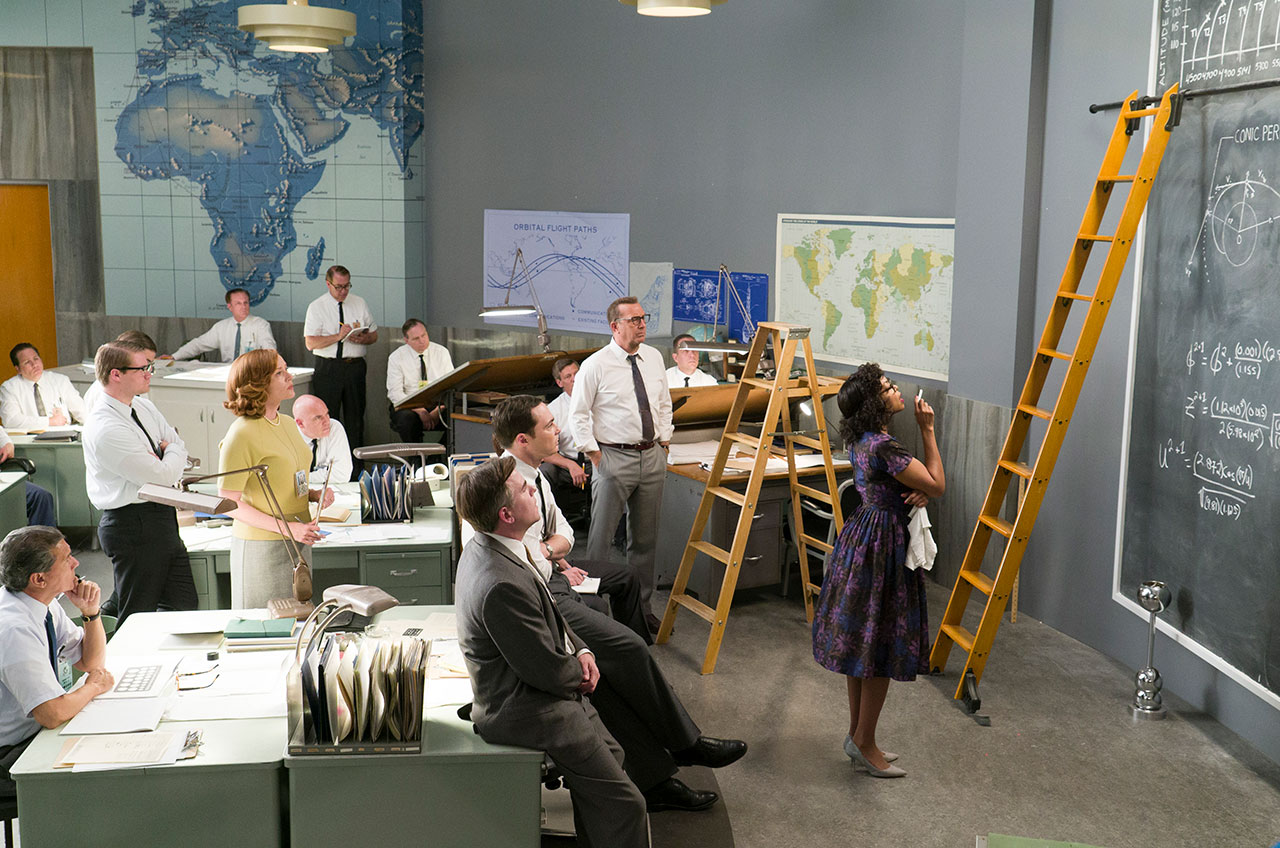I caught “Hidden Figures” at the theater last Friday. Put simply: it’s a damn fine movie. Entertaining, well acted and uplifting. I understand some people see subtle hints of messages about race and gender in it, but what I saw was a fact-based story about three women who improve their own lots in life *and* make valuable contributions to society by not only hard work, but smart work in STEM fields. One is a mathematician, one an engineer, one a computer programmer (this was in an era when a “computer” was a person, someone who spent their days computing); all dedicated and skilled, and all working to put American astronauts into orbit.
The majority of the movie is set circa 1961 at NASA-Langley. It is thus *filled* with early 1960’s aerospace stuff… wind tunnels, adding machines, an early IBM computer that fills a room and requires boxloads of punch cards to program. Also included: lots of maps and plots and blueprints tacked to the wall of the Space Task Group room. Such as seen here:

See the two blueprints on the wall behind Kevin Costner? Those are Mercury capsule cyanotype blueprints I provided to the movies art department. Yay! This is, I think, the fourth time I’ve provided blueprints and diagrams to a movie or TV show to serve as props or set dressing; this is the first time where the scene didn’t get cut. So… huzzah! A few more of my blueprints appear in the flick, but these two were the standouts.
Now, if’n you’re like me, you’re an aerospace history nerd. Which means you pick movies apart like any other nerd, looking for the nitpicky continuity flaws (“Sulu wouldn’t push *that* button, he’d push *that* button!”). So, yeah, there are a few things that made the nitpicky nerd in me go “Heyyy…” A TV news reporter describing Alan Shepards first flight mentions that the sub-orbital Redstone rocket will go to “116 miles… per hour.” Shoulda stopped two words sooner, Ace. Though to be fair, it’s entirely possible that a reporter would flub their units like that. And in Al Harrisons (Kevin Costners) office, there are a number of bits of art, including a wooden display model of the C-5 Galaxy. Which would be a neat trick in 1961, given that the Galaxy wouldn’t be designed for another three years. Some stock footage of non-Redstone ballistic missiles going FOOM during testing, standing in for Redstone testing failures. And there’s a scene where Sheldon Cooper explains just what orbits are… to a room of NASA engineers who have been working on Mercury for a few years. Pretty sure they know what an orbit is. Of course, this scene was included not because it’s historically accurate, but because the *audience* might need to have the concept of an orbit explained to them (a damning indictment of the American edumacational system if ever there was one). But it still yoinked me right out of the moment.
But on the whole I found the movie to be terribly entertaining. The main characters are all well written and well acted, behaving with professionalism and dignity even when faced with some serious dumbassery by their co-workers and their segregated environment. It’s the first non-Star Wars/Avengers/Lord of the Rings movie that I can recall where a sizable fraction of the audience applauded at the end. The special effects are relatively few; the movie doesn’t focus on the astronauts or the space flights, but on the people almost always forgotten in these stories: the engineers and mathematicians back on the ground whose work actually made the flight possible. But the effects that are included are pretty good and serve the movie well.